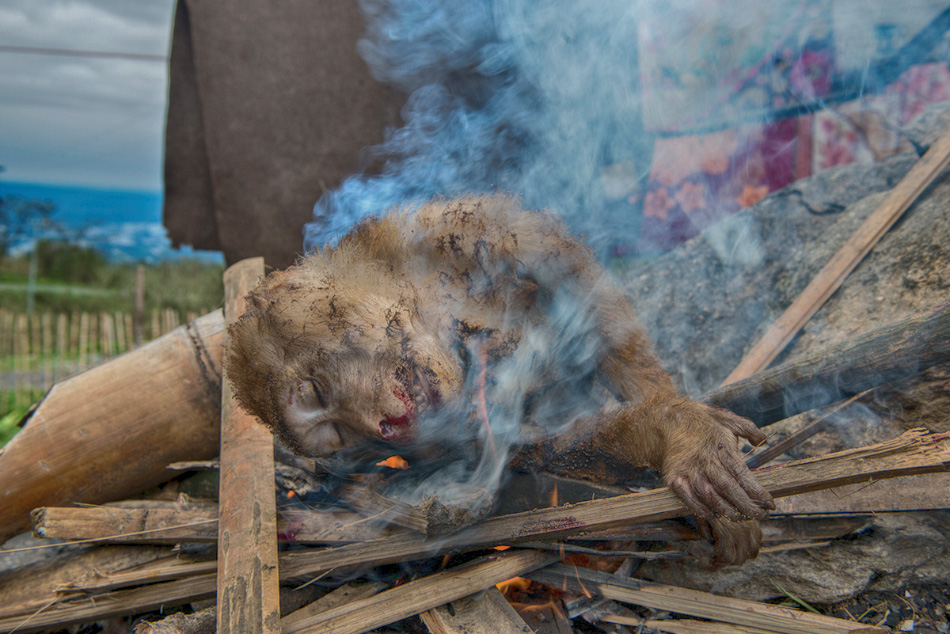 "
"
Last week, I was travelling in Arunachal Pradesh with a few friends. On our way to Udayak Pass (in the Lohith Valley), we stopped to photograph some birds when a bike sped by us. On the bike was freshly killed bushmeat – a macaque. The hunter’s house was just around the corner and we managed to get there just as he was hauling the macaque off the bike. A close look confirmed our worst fears – this was a White-cheeked Macaque (Macaca leucogenys) – India’s newest mammal species.
Described to science just a year ago by Dr. Cheng Li, Dr. Chao Zhao and Dr. Peng-Fei Fan, it was believed that this macaque was found only in South-Eastern Tibet. Until, on April 21, 2016, Udayan Borthakur and Dr. Ranjan Kumar Das announced that they’d photographed this species in Eastern Arunachal Pradesh around the time that it was first described (see here). Though it looks similar to the Assam Macaque (Macaca assamensis), it has various differences like the elongated white whiskers on the face (covering the whole face in mature individuals), dense hair along the neck and shape of the male genitalia.
We’d come across two troops of White-cheeked Macaque just a couple of days earlier along the same road. And now, here lay a young male at our feet with a bullet through his head. As the family made preparations to cook their meal, we got chatting with our friendly host who was from the Digaru Mishmi tribe. They’ve been hunting these macaques for as long as he can remember, exclusively for feeding the family. They claim the macaques are only hunted a couple of times every year to ensure long term sustainability of the food source. Dogs are his allies in the hunt as they isolate a macaque from the troop making it easier for him to take a shot. We proceeded to explain to him that this species was new to science and that the whole world was excited with the discovery. Our birding guide told him his life story and how tourism can help bring in the money for a sustainable future without harming wildlife. Our host just nodded along with a gentle smile.
Throughout our brief journey in the forests of Arunachal Pradesh, we came across people with guns and kids with catapults. Hunting seems to be an easy way to put food on the table, given that it is handed down in traditional culture and the law is poorly enforced in these remote parts.
As we left the house that morning, an energetic 3-year-old ran about with his parathas and tumbler, probably excited about the special lunch that day.

 CI is a non-profit, non-commercial portal that aims to facilitate wildlife and nature conservation by providing reliable information and the tools needed to campaign effectively.
CI is a non-profit, non-commercial portal that aims to facilitate wildlife and nature conservation by providing reliable information and the tools needed to campaign effectively.
Chosen as 'Picture of the Week'
Throughout the forests of Arunachal Pradesh, we came across people with guns and kids with catapults. Hunting seems to be an easy way to put food on the table, given that it is handed down in traditional culture and the law is poorly enforced in these remote parts.